A Century of Trading in South East Asia

The history of the Straits Steamship Co. Ltd. was closely tied up with that of its managers, Walter Mansfield and Company, the family having been originally shipbuilders in Teignmouth in Devon. George Mansfield was taken into partnership in 1872 by his uncle Walter Mansfield, the latter person having arrived in Singapore with his wife and an agency contract in his pocket on 29th May 1868 to begin the Alfred Holt agency in the port for the Ocean Steam Ship Company (Blue Funnel Line). An enterprising Dutchman, Theodore Cornelius Bogaardt, also joined Mansfield and Company as a partner in 1872, a year before the death of Walter Mansfield in England. The firm was now headed by George Mansfield and Theodore Cornelius Bogaardt, and between them they laid the basis for a new period of expansion. George became the Senior Partner, but Bogaardt was much more dynamic and took over the leadership of the company when George Mansfield retired on 28th August 1883 and sailed home on the Holt steamer Agamemnon.
Formation Of The Company
The Straits Steamship Company Ltd. was set up in Singapore on 20th January 1890 by Theodore Cornelius Bogaardt in conjunction with the powerful Straits Chinese Tan family of Malacca with a initial capital of 500,000 Singapore dollars. The initial subscribers were Theodore Cornelius Bogaardt, Tan Jiak Kim (1859-1917), a merchant and political activist and head of the Kim Seng Company, Tan Keok Saik, and Lee Cheng Yan, a merchant and philanthropist born in Malacca in 1841 and who died in Singapore on 18th May 1911, and also A.P. Adams, D.J. Mathens and J. Burkinshaw, the latter trio all being directors of Mansfield and Company.
Theodore Cornelius Bogaardt was as influential as John Swire in changing the direction in which the Ocean Steam Ship Company (Blue Funnel Line) would expand, with Singapore as the centre of activity, with the Straits Steamship Co. Ltd. acting as a feeder to the big deep sea ships of Blue Funnel Line from the smaller ports of Malaya into Singapore. The Kim Seng Company provided three of the first five ships of the Straits Steamship Company, which at first participated in the tin ore trades from the mining regions of the Western Malay States to the smelting works of the newly established Straits Trading Company Ltd. of 1887 in Singapore. The Straits Trading Company Ltd. was a very successful company in the smelting and exporting of over 55% of the tin mined from the Straits Settlements. It was established by James Sword, a Scottish businessman, and Herman Muhlinghaus with a capital of 150,000 Singapore dollars to mine the rich tin deposits of the Kinta Valley and the Klang Valley. The tin ore mines were most productive in the Kinta Valley area, and the ore was shipped from the small ports of Port Weld and Telok Anson, midway between Penang and Port Swettenham, into Singapore. The coolie Chinese labourers had arrived to work in these mines on Blue Funnel ships from Southern China to Singapore.
Port Weld was named after Frederick Weld, a Governor of Larut, Matang and Selama district in Perak. The tin ore mineral line from the mines in the interior at Taiping to the shipment port of Port Weld has now been dismantled, and the port is today called Kuala Sepetang. Telok Anson lies upstream in the Perak river with the current name of the port and town as Teluk Intan. During the British protectorate era, the name was changed to Telok Anson, in honour of the Lieut. Governor of Penang, Sir Archibald Edward Harbord Anson, who drew up the plan for the modern town in 1882, which today is the third largest town in the State of Perak. Services from Singapore also ran to Klang and Port Swettenham in Selangor and Port Dickson in Negri Sembilan.
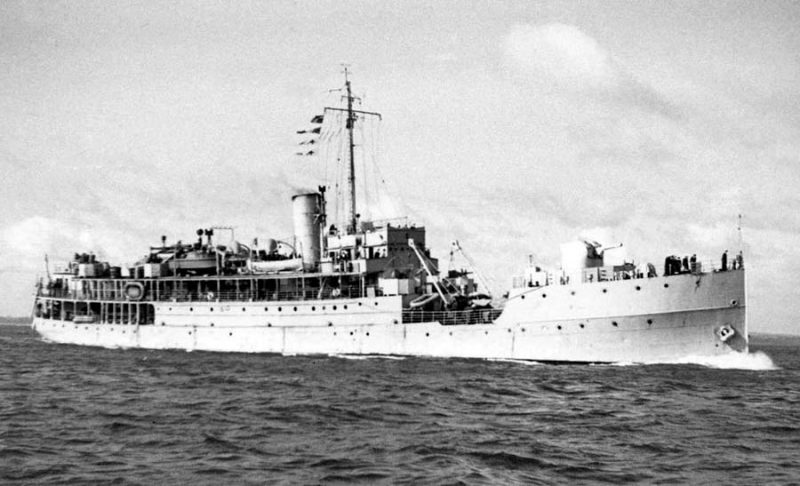
The 839grt Larut was built in 1927 by Hall Russell & Co. at Aberdeen. On 23rd January 1942 she was bombed by Japanese aircraft and set on fire. She was beached at Sabang, Sumatra but burnt out. Her crew were saved.In 1892, Mansfield and Company took over the management of Straits Steamship Company Ltd., with Theodore Cornelius Bogaardt then in control of both companies. A year later, Blue Funnel Line also set up its own feeder line, the East Indian Ocean Steam Shipping Company, with Mansfield and Company also managing the line. Theodore Cornelius Bogaardt left Mansfield and Company in 1895, and the link between both Holts and Mansfield and Company with the Straits Steamship Co. Ltd. was severed until World War I. The Straits Steamship Company Ltd. played a considerable part in the exploitation of tin and other minerals of Western Malaya, running a twice weekly service from Penang to Singapore, and a regular ore shipment trade from Port Weld and Telok Anson to Singapore. The ore trade carried on for over twenty five years, and was replaced by the rubber trade after the end of World War I, by which time the Straits Steamship Company Ltd. had major links to Malacca, Port Swettenham, Penang and the smaller ports of Western Malaya, as well as to Sabah, Sarawak, Sumatra, Siam, Burma and ports on both coasts of the Malayan peninsula. 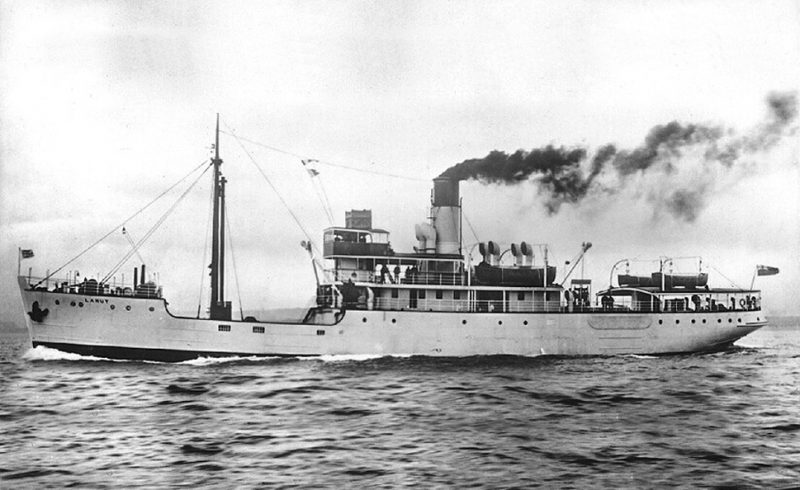
The 1,282grt Kelantan was built in 1921 by Caledon Shipbuilders at Dundee. She survived until 1953 when she was broken up by Barretts Trading at Singapore.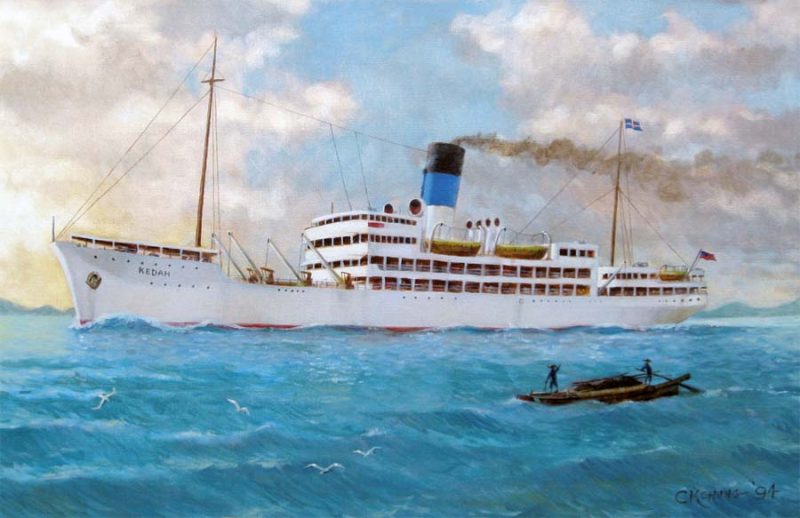
The 2,499grt Kedah was built in 1927 by Vickers at Barrow. She joined Zim Line as Kedmah in 1947 and was managed by Harris & Dixon. They purchased her in 1952 and renamed her Golden Isles. On 26th September 1956 she arrived at Newport to be broken up by John Cashmore.
The First Straits Steamship Fleet
In the first decade of operation between 1890 and 1900, over a dozen small coasters were operated, many able to carry deck passengers to Malacca, Penang and the mining regions to the south of Penang. These small ships included:-
- Lady Weld 511/1888 a steel paddle steamer built by Scott & Company at Greenock and in service with the company until broken up in 1922.
- Hye Leong 492/1882 built by Blackwood & Gordon on the Clyde and in service with the company until 1926.
- Malacca 653/1882 built by Ramage & Ferguson at Leith and in service with the company until the 1920s.
- Will o’ the Wisp 283/1883, a former Mansfield & Company steamer until sold to a Singapore owner in 1896.
- Ooriya 543/1875 built by Scott & Company at Greenock and in service with the company until sold in 1893.
- Sappho 532/1887 built by Scott & Company at Greenock and in service with the company until 1923 when sold for use as a floating pilot station near Bangkok.
- Ban Whatt Hin 361/1885 built by Blackwood & Gordon on the Clyde and in service with the company until sold in 1911.
- Billiton 336/1879 built by Blackwood & Gordon but burnt on 14th May 1895 when her cargo of kerosene ignited off Muka Head, the north west part of Penang.
- Lady Mitchell 935/1882 an iron screw steamer built by J.C. Tecklenborg at Geestemunde near Bremerhaven in Germany with triple expansion steam engines by F. Schichau and in service with the company for ten years.
- Neera 357/1878 built by T. Wingate at Glasgow with triple expansion steam engines by Dunsmuir & Jackson and in service with the company until sold in 1900.
- Pegu 577/1865 built by L. Hill at Port Glasgow as an iron screw steamer and in service with the company until 1895.
- Gympie 220/1883 built by the Campbeltown Shipbuilding Company and in service with the company until sold in 1893.
- Penang 623/1881 built by Ramage & Ferguson at Leith and in service with the company until the 1920s.
These small vessels varied in length from 180 feet to 210 feet, with moulded beams of between 22 feet and 32 feet, with either engines aft, quarterdeck, or of ‘three island’ design, iron or steel hulls, and compound or triple expansion steam machinery. Larger passenger vessels carrying up to one hundred First and Second Class passengers and four hundred deck passengers were later built by the Dundee yard of the Caledon Shipbuilding and Engineering Co. Ltd. beginning from 1903. Selangor 1,019/1903, Perak 1,188/1906, Kinta 1,220/1907, Ipoh 1,279/1908, Klang 1,461/1911, Kuala 954/1911, Kelantan 1,282/1921 and Darvel 1,929/1924 were coastal passenger ships of up to 261 feet in length with moulded beam of 41 feet.
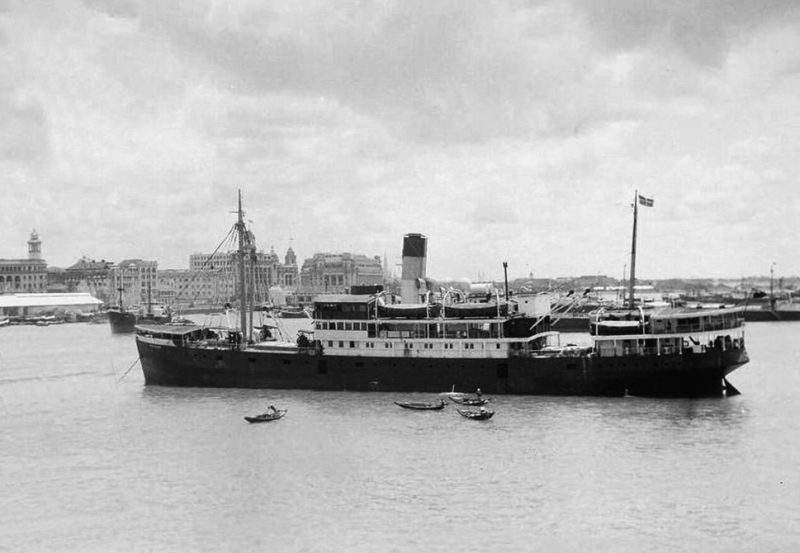
Ipoh of Straits Steamship Company had three deck erections, one forward, one just aft of ‘midships, and the third aft, with each having a separate accommodation function. The forward block was the navigating bridge and officer accommodation, the central block housed the First and Second Class passengers, and the poop deck block housed the crew. This was a design prevalent in South East Asia and the Dutch East Indies waters, where good ventilation was essential for all accommodation, and the Koninklijke Paketvaart Maats (KPM) had several examples. Kuala of 1911 had the misfortune to run aground on Socotra Island in the Gulf of Aden on her delivery voyage in early 1912. The company superindent and general manager, H.E. Somerville, was onboard and he ordered the crew to abandon ship, with the ship then completely stripped by local natives. She was refloated after two months and taken to Bombay, where sufficient repairs were undertaken for her to reach Singapore. The repairs by the Singapore Harbour Board took a year and she entered service in 1913 and operated for the company until the outbreak of war in September 1939 when she was requisitioned as a naval patrol ship.
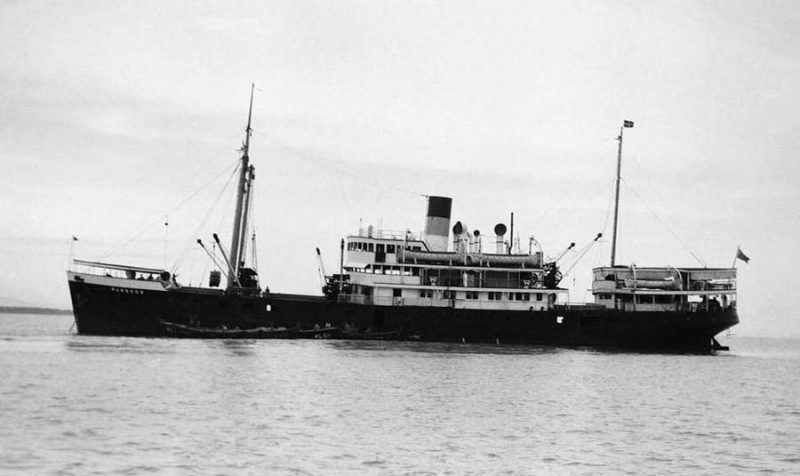
In 1903, the senior partner of Mansfield and Company, A.P. Adams, retired, and the Ocean Steam Ship Company took the opportunity to acquire control of the partnership via a new Walter Mansfield and Company with a capital of £10,000 with Blue Funnel Line holding 67.5% of the shares. Blue Funnel Line took a 58% majority holding in the Straits Steamship Company Ltd. itself during 1914, which later increased further to 65% in 1973. The Chairman of the company in 1912 was D. K. Somerville, who had arrived in Singapore in 1900 and who died on 15th September 1936. The General Manager was H.E. Somerville, and the other directors were Tan Jiak Kim, Lee Choon Guan, Yow Ngan Pan and W.W. Cook.
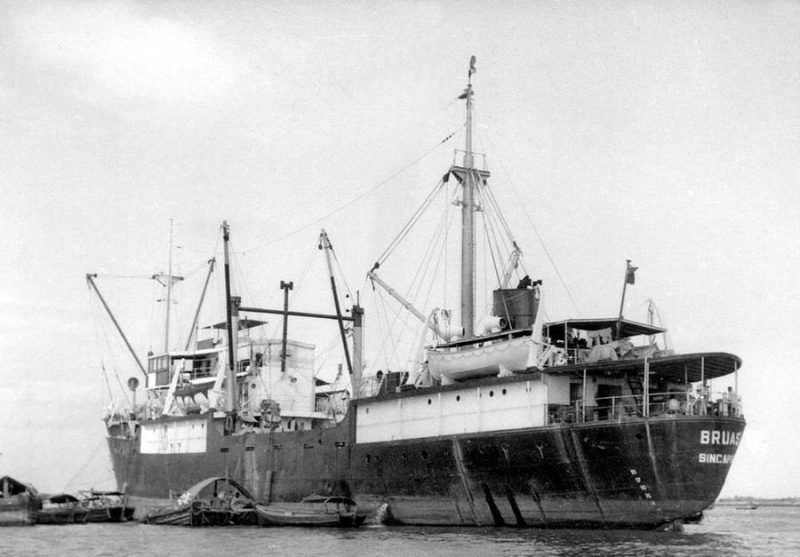
The Straits Steamship Co. Ltd. fleet doubled in size from a dozen ships in 1912 to two dozen ships in 1917, as vessels such as Krian 900/1911 arrived from Scotts of Greenock, as well as earlier ships that included the quarterdeck steamer Carlyle 436/1901 from the Selby Shipbuilding and Engineering Co. Ltd., and Kaka 396/1901 from the Clyde Shipbuilding Company at Port Glasgow.
The outbreak of war had little effect in the Far East and South East Asia, in fact the opposite was the case as the economy of these areas boomed. The company was forced to order five new ships from Hong Kong in 1914 due to British yards being occupied by the war effort, which were delivered in 1916 as the sister passenger and cargo ships Kajang and Kamuning of 2,077 grt from the Taikoo Dockyard on dimensions of length 279.0 feet, moulded beam of 41.1 feet and depth of 15.8 feet with triple expansion steam engines supplied by the builder. The slightly smaller Kepong 1,874/1916 came from the same yard, while Katong 1,461/1915 and Kampar 971/1915 came from the Hong Kong and Whampoa Dockyard Co. Ltd.
The Tyne built steamer Poh Ann 781/1881 had been purchased in 1912 as she had accommodation for thirty First Class passengers. She had been completed on 18th April 1881 from the Neptune yard of Wigham Richardson & Company at a cost of £15,000 for Guthrie & Company of Singapore, and had a service speed of nine knots from a two cylinder compound steam engine. A German built steamer, Sandakan of 1,795 grt, was also in the fleet at this time, with the three deck erections design and a length of 253.5 feet, moulded beam of 37.3 feet, and depth of 19.6 feet, and deck houses of length 26 feet.
Inter-War Expansion And Takeovers
Chairman H.E. Somerville joined the Board of Directors of Mansfield and Company in 1922, and began a big expansion policy of the company by a series of takeovers of other Malayan coasting companies, which saw profits increase to $826,000 in 1940. The network in South East Asia was extended to include services from:-
- Singapore to Malacca, Port Swettenham, Penang and Tongkah in Thailand
- A weekly service from Singapore to Penang and Belawan on Sumatra
- A weekly service from Singapore to Kuantan and Kelantan on the Eastern Malay coast, with the north of Kelantan forming the border with Thailand, and Kuantan the capital of Pahang State
- A fortnightly service from Sandakan in North Borneo to Zamboanga in Mindanao (Philippines) and Jolo, a volcanic island in the South West Philippines and a primary island of Sulu Province in the Sulu archipelago, returning to Darvel Bay ports in Sabah
The Eastern Shipping Company of Penang was taken over in 1922, which was founded in 1907 as an amalgamation of the five leading shipping and trading companies of Koe Guan Company (trading from Penang to Western Siam and Malaya from the 1880s), Beng Brothers, Hock Chong and Company, Kong Hock and Company and Leng Cheek and Company. A large initial capital of 1.4 million Singapore dollars and a fleet of sixteen vessels posed a big threat to both the Straits Steamship Co. Ltd. and the KPM fleet of the Dutch East Indies. The first steamers in the fleet were Avagyee, Ban Whatt Soon, Cornelia, Deli, Janet Nicholl, Jin Ho, Langkat, Mary Austin, Omapere, Perak, Peram, Pin Seng, Resident Halewyn, Rotorua, Taw Tong, and Vidarl. The fleet had increased to more than forty vessels by 1912 and the Board of Directors was composed of sixteen prominent businessmen. Tin ore was mined in the Perak region and taken to the smelters in Penang, operated by some of these directors and exported to Great Britain, Germany and the United States of America. The eleven steamers of the Eastern Shipping Co. Ltd. that were taken over were Ban Whatt Soon 336/1881, Jin Ho 209/1886, Kedah 205/1910, Omapere 601/1882, Pangkor 205/1910, Perak 529/1903, Perlis 146/1913, Pin Seng 617/1881, Pungah 125/1912, Renong 733/1916 and Trang 205/1912.
Further subsidiaries of the Straits Steamship Co. Ltd. were formed by the takeover of the Sabah Steamship Company of Sandakan in 1927, the Sarawak Steamship Company of Kuching in 1931 and founded on 1st July 1875 by British and Chinese businessmen, the Ho Hong Steamship Co. Ltd. of Singapore in 1932, the Kheng Seng Steamships of Malacca in 1934, and the Hua Khiow Steamship Company in 1939. An investment was also made in the Thai Navigation Company, and non shipping takeovers included the Malayan Water Transport Company, the Kelantan Lighterage Syndicate, and the essential Singapore Steam Laundry that provided clean linen for the First Class and Second Class passengers travelling with the company.
The first motorships in the company appeared in 1924 with the completion at the Belfast yard of Workman, Clark & Co. Ltd. of Marudu of 1,926 grt on dimensions of length 263.2 feet, moulded beam of 41.7 feet and depth of 18.2 feet, and powered by a six cylinder four stroke single acting Burmeister and Wain diesel engine. She was a handsome coastal passenger vessel with a long poop deck of length 154 feet and a short bridge deck of length 36 feet. The twin sister motor vessels, Rengam and Rompin of 189 grt followed a year later and powered by the unique four cylinder Bolinders two stroke single acting engine. The fleet had increased greatly in size from two dozen steamers in 1921 to 37 steamers and motorships in 1925. The twin screw, engines ‘midships, white hulled passenger steamer Matang of 1,463 grt came from the Hong Kong yard of the Taikoo Dockyard in 1928, and was powered by twin triple expansion steam engines with cabin passengers accommodated in a central superstructure, and others accommodated aft.
A new splendid twin screw flagship of the company with a white hull and a black, blue and white funnel, and two brown masts, was completed by the Barrow yard of Vickers Ltd. in September 1927 and was named Kedah after a massive limestone outcrop mountain of 3,854 feet in height on the coast between Penang and Langkawi. She was expressly designed for the service between Singapore, Penang and Belawan on Sumatra, a distance of 350 miles covered by her service speed of nineteen knots with her maximum on trials being over twenty knots from four Parsons steam turbines of 5,800 shaft horse power taking steam from four Babcock and Wilcox watertube boilers and with single reduction gearing reducing the propeller speed to 220 rpm. She had a gross tonnage of 2,499 with a deadweight of 1,170 tons on a loaded draft of 14.8 feet, with an overall length of 330.0 feet, moulded beam of 50.5 feet, and depth to shade deck of 25.6 feet, and a fo’c’stle of length 45 feet. She had two continuous decks and three holds with a mail room further aft, and her cargo was handled by six steam driven deck cranes each of two tonnes capacity.
Kedah sailed from Singapore at 1130 hours on Thursdays, reached Penang at 0830 on Fridays, followed by a weekend voyage to Belawan on Sumatra and returned to Singapore at 1330 hours on Tuesdays to her own ‘Kedah Anchorage’ within convenient reach of the company Head Office on Collyer Quay. The ‘midships accommodation for eighty First Class passengers was extremely elegant and well ventilated for service in tropical waters with open decks to allow air through and shaded verandahs, with three public rooms grouped vertically beneath the navigating bridge, the two lounges being above the dining room. The double berth Second Class accommodation was aft of that of First Class on two decks, while aft of this in the midships block were more cabins located at the after end of boat deck. Kedah also carried up to 960 deck passengers, access and ventilation to the spacious main deck being by a series of double doors and large openings.
Klang of 1911 had an unfortunate episode in 1925 on her regular run from Singapore to Port Swettenham when a Malay passenger ran amok and killed her Master Capt. McDonald and nine other people, with their assailant then shot dead by Malay police. Two similar twin screw examples of coastal passenger and cargo liners of 1,200 grt were completed by the Taikoo Dockyard at Hong Kong as Raub in 1926 and Pangkor in 1929, a good service speed being obtained from twin triple expansion engines. An interesting steam powered phosphate, mail and passenger carrying vessel was purchased on 13th February 1930 and renamed Moni. She had been completed as Islander of 1,185 grt in March 1906 by the Meadowside yard of D. & W. Henderson Co. Ltd. for the Christmas Island Phosphate Co. Ltd., but lasted for only four years under company ownership as she was broken up in April 1934 at Singapore.
During the inter-war years, there were in addition over two dozen small company vessels, with some able to carry only 200 to 300 tonnes of cargo, which due to their shallow draft could enter very muddy coastal creeks and inlets to bring out cargo destined for the bigger ports. These included Ampang of 1925, Brunei of 1930, Gemas of 1925, Hua Tong of 1925, Intan of 1929, Jarak of 1927, Jeram of 1927, Jerantut of 1927, Jitra of 1929, Larut of 1927, Lipis of 1927, Malacca of 1927, Pandai of 1928, Petaling of 1928, Rahman of 1926, Rantau of 1933, Rasa of 1933, Rawang of 1923, Relau of 1938, Rengam of 1925, Rimau of 1935, Rimba of 1925, Rompin of 1925, Sitiawon of 1920, and Subok of 1935. The last vessel completed for the company before the outbreak of World War II was Pahang of 1,136 grt by the Taikoo Dockyard on dimensions of length 218.0 feet, moulded beam of 36.6 feet and depth of 11.3 feet, with her engines aft shelterdeck design featuring a six cylinder four stroke single acting Humboldt Deutz diesel made in Kolm in Germany.
Escape From Singapore
The Straits Steamship Company fleet stood at 51 vessels on the outbreak of war in September 1939, but the fleet was to be decimated in a bitter war fought against the Japanese. War arrived on the Malayan peninsula at dawn on 8th December 1941 when the warships of Admiral Ozawa began bombarding Kota Bharu in Northern Malaya. General Yamashita then landed three divisions of 60,000 Japanese troops at Kota Bharu and at Patani in Southern Thailand. The Japanese advanced south with some speed, and 31 of the 51 company ships were quickly requisitioned and remained in Malayan waters, while other vessels escaped south to Java and Australia or west to Colombo and India. The island of Singapore covers only half of the area of Greater London, but had been made inviolable to sea attack with many powerful gun batteries protecting the sea approaches. However, it was not defended to attack from the north and although the two bridges from the Malayan peninsula were cut in the middle, the Japanese began their assault on 8th February 1942 and the battle was to continue for a week. The British and Allied forces numbered 150,000 and were surrendered a week later by Lt. General Arthur Percival on 15th February, the irony being that General Yamashita had outrun all of his supply columns and a counter attack would have probably been successful.
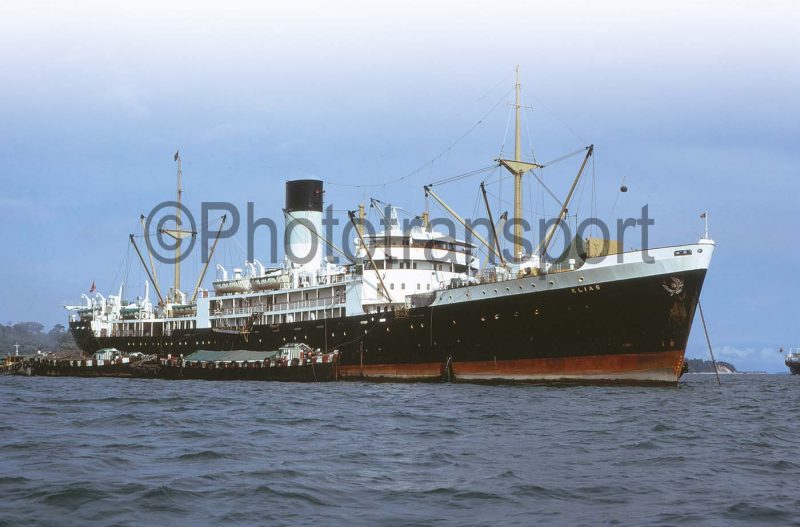

My uncle Harry Lea was one of this British captured force that were forced to work as slave labour on the infamous bridge over the river Kwai and the horrendous ‘Death Railway’ into Burma, and in the iron ore and copper mines of Japan towards the end of the war. He survived but arrived back home weighing only five stones on a British battleship across the Pacific and Canadian Pacific train to Montreal followed by a Cunard liner to Liverpool. It took him two years to recover his health and weight and he later wrote his wartime memoirs, but he never forgave the Japanese for their brutal physical and mental barbarity against British prisoners of war.
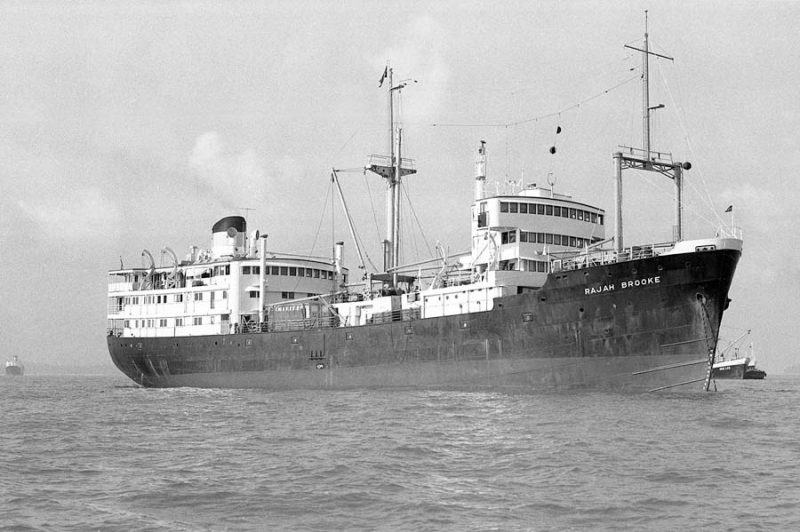
The vessel Kuala was ordered to assist in the evacuation of British personnel and other refugees from Singapore on 13th February, but was sunk a day later off Pompong Island in the Banka Strait while carrying hundreds of British nurses, women and children of which only three survived. By the end of the Japanese invasion campaign in the islands of Sumatra, Java and Borneo, some 37 ships of the Straits Steamship Company Ltd. and its subsidiaries had been lost. Kampar was sunk at Penang on 12th December 1941 by bombs and machine gunning, then Jitra, Rejang, Gladys, Subok, Brunei, Trang, Vyner Brooke with 125 missing from her 181 passengers and 47 crew, Malacca, Katong with only 5 survivors, Kamuning sunk in tow for Colombo, Klias, Krian, Petaling, Raub, Jarak, Hua Tong, Larut, Jerantut, Kudat, Gemas off Tjilatjap in Java while making for Australia, Jeram at Tjilatjap, Ipoh at Batavia, Ampang, Sin Kheng Seng, Auby at Batavia, Rahman off Batavia, Margaret at Kuching, Kim Cheng Seng at Kuching, Pandai, Rengam, Rimba and Intan at Penang, Rompin at Muntok, Rawang in Malayan waters, Kinta at Batavia, and Lipis at Tandjong Priok.
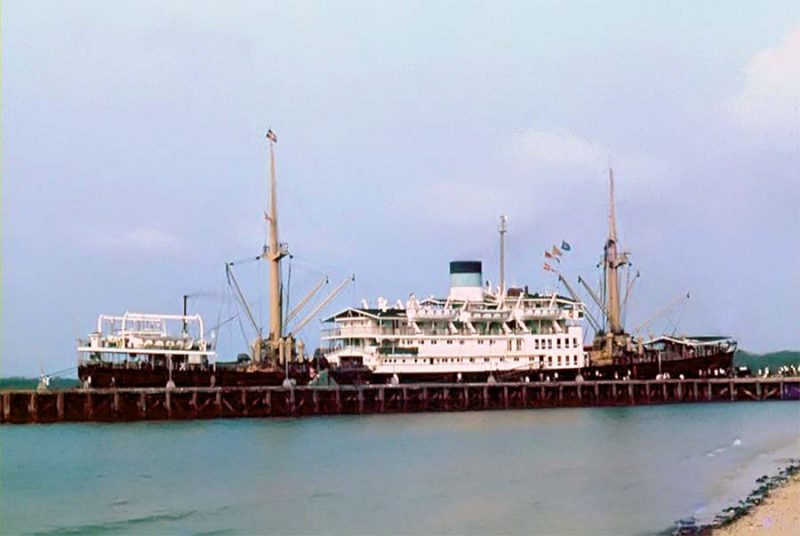
The flagship Kedah under Capt. J.L. Sinclair sailed from Singapore two days before the fall of the port on 14th February 1942 with hundreds of refugees, and was strafed and bombed for three hours, but thanks to brilliant manoeuvring by her Master she managed to avoid a direct hit. However, her engines were partially damaged due to vibration from near misses and her best speed was only seven knots. She than sailed from Batavia for Colombo with 400 refugees onboard, but her engines failed on the last stage of the voyage and she arrived at Colombo in tow. She operated in the Bay of Bengal under naval requisition until 1945, and was the Headquarters Command Ship for the Malayan invasion.
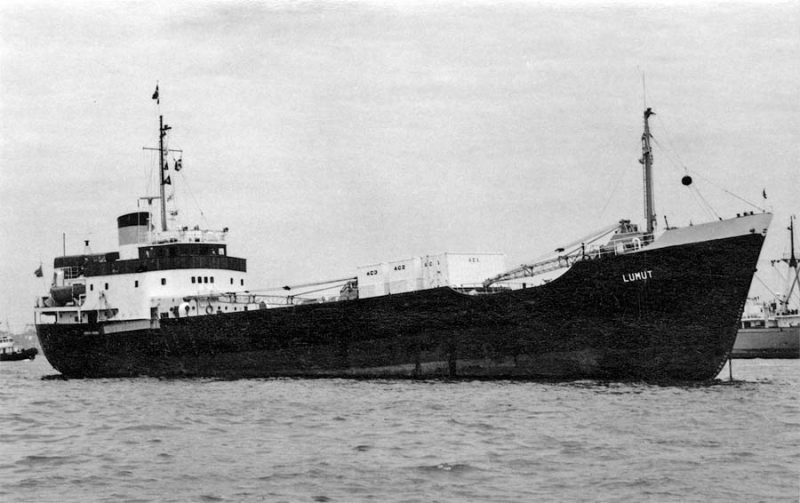
Some of the fleet managed to escape southwards to Australia, or westwards to Colombo and India and continued the struggle against the Axis powers. Tung Song, Circe, Medusa, Klang and Darvel reached Australia, with Circe and Medusa based at Fremantle for the duration of the war as minesweepers. Tung Song also reached Fremantle, then on to Sydney ending in New Guinea and the Bismarck Archipelago. Klang reached Fremantle and was used as a submarine depot ship for American forces, and then was sent to Madang, Wewak and Humboldt Bay in New Guinea in October 1944 and was used as a forces ‘rest and relaxation’ ship with canteen and bar. Humboldt Bay was located fifty kilometres west of the border between the Dutch East Indies and Papua New Guinea. American and Australian forces were inexorably clearing the islands off New Guinea of the Japanese as they pushed northwards towards Japan. Darvel acted as a troop, ammunition and stores transport between Australia and the islands to the north of New Guinea, and then after New Britain and New Ireland were cleared of the Japanese, she steamed to Bombay in late 1944 and was promptly turned into a Naval Store Ship in the British Pacific Fleet Train.
The company ships that escaped westwards from Singapore to Colombo and ports in India also served in useful capacities during the war and included Kelantan, Kepong, Pahang, Perak, Matang and Kajang, the latter pair serving in the shallow river waters of West Africa based at Bathurst and Freetown. Pahang became a cased petrol carrier in the Mediterranean at Alexandria, but after several narrow escapes after fumes had filled her holds, she blew up and sank at Tobruk on 31st January 1943, thankfully with only slight injuries to her crew. Perak was converted into a Hospital Ship and served at Haifa, Alexandria, Naples, Malta, Karachi, Bombay and finally served in the same capacity for the battles off the Burmese coast in late 1944 and early 1945. Kelantan arrived in Colombo in March 1942 and then carried a relief garrison to the Cocos Islands and after other missions from Colombo, she was ordered to return to the U.K., suffering an engine room fire off the Seychelles and was repaired at Durban. She returned in convoy SL125 from Freetown to the Clyde acting as Convoy Rescue Ship, and picked up over seventy survivors from thirteen torpedoed ships. She was then employed as a Royal Naval instructional ship in the King George Docks on the Thames. Kepong served in the Persian Gulf and Mediterranean theatres of war as an ammunition ship including at Benghazi, Haifa and the Dodecanese Islands before returning to the U.K. The former Chairman of the company, H.E. Somerville celebrated the ending of the war with a party for the officers of both Kelantan and Kepong.
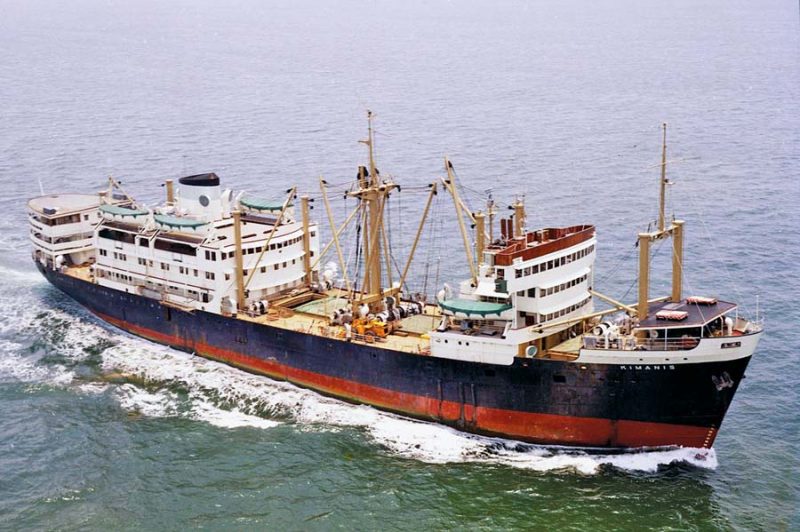
Thailand declared war on the Western Allies on 25th January 1942 having concluded a peace treaty with Japan. Three old American freighters built in the U.S.A. at the end of World War I were sold to Thai ownership in 1940, and were taken as British prizes in 1942. Nang Suang Nawa became Empire Adur, Threpsatri Nawa became Empire Hamble, and Sisunthon Thon was not renamed by the M.O.W.T., which gave management of all three to the Straits Steamship Co. Ltd. The condition of their boilers and engines was lamentable, with often dense black smoke and flames shooting out of their funnels. The condition of Empire Hamble was so bad that her crew walked off, and were replaced by an American crew with no previous experience of seafaring, and thus she became a berthed canteen ship. She had a refit at Sydney and then took part in May 1945 in the Wewak landings on the north coast of New Guinea, carrying torpedoes and gasoline. Empire Adur was a constant problem to her convoy escorts with black smoke visible for miles, however her worst feature was that her steering wheel twice became detached at night from its mounting due to the holding nut falling off, resulting in complete confusion in her convoy.

The Singapore Straits Steamship Company Ltd. was established in 1943 with a temporary head office in Taunton to plan for the rebuilding of the company and its fleet after Japan had been defeated and ousted from Singapore. The value of the company assets outside Malaya was not great, but a two year planning period was essential to allow time to send new ships out to India, to find new officers and crews to man the new fleet, and organisations to be set up in India once the ships had arrived and to plan for the invasion of Malaya. The flagship Kedah was operating under naval control in the Bay of Bengal and was chosen to be the Headquarters Command ship under Rear Admiral J.A.V. Morse (Rear Admiral Malaya Designate) with a staff that included Commander W.P.F. Legge of Mansfield and Company.
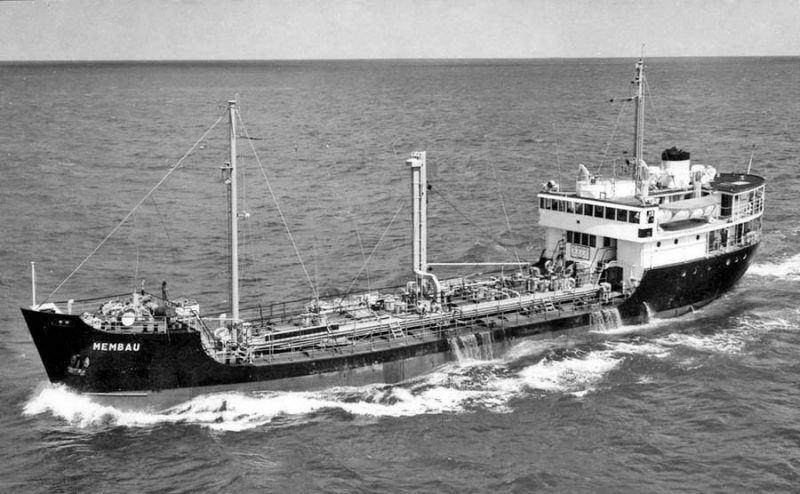
During late 1944, several British aircraft carriers flew a series of air strikes against Japanese oil targets in Sumatra including Operation Meridian. One American aircraft carrier also supported the British carriers on important missions to recapture Burma. Akyab Island and its lighthouse off the Burmese coast was attacked on 2nd January 1945, with landings on Ramree Island, 70 miles south of Akyab, on 21st January 1945 to establish airbases for the aerial attacks of the mainland campaign. British and Indian forces operating under SEAC (South East Asia Command) then took other strategic ports down the west Burmese, Thai and Malayan coasts e.g. Ruy-wa, Kyauk-Pyyu, Phuket, Langkawi, Penang, Port Swettenham, and Malacca. Kedah proudly swept into Singapore harbour at dawn on 5th September in the van of British naval forces and tied up in Keppel harbour. The first vessel to arrive in Singapore flying company colours and with her funnel repainted in the correct colours was Perak under Capt. Cleaver shortly afterwards.
Post World War II Rebuilding
The new and returned former officers and crews of the company, if married, were asked not to bring out their wives to the devastated city of Singapore when the company recommenced services in April 1946. However, some wives did not want to be separated and found ways and means in turning up at Clifford Pier to be reunited with their husbands, and then found they were forced to stay in cramped, dirty and expensive accommodation. The officers and crews had the same problem, and the company then built blocks of modern furnished flats on a piece of land between Tyersall Camp and Farrer Road. The blocks of flats were named the Somerville Estate, after two former Chairmen of the company in D.K. Somerville, who had arrived in Singapore in 1900, and H.E. Somerville, who relinquished his post in 1943 after returning to the U.K. in 1942.
The flagship Kedah had a brilliant career under naval requisition due to her high speed and manoeuvrability and returned to England for a well earned and long refit. She did not rejoin the company services but instead was sold to become the first passenger ship Kedmah in the Zim Mediterranean fleet. The vessels Rentau, Rasa, Relau, Rimau and Tapang were returned after use by the Japanese, but Circe, Medusa and Kinta were unworthy of repair and their compensation money was used to rebuild the fleet. Kelantan was refitted in London and after further service was broken up in Singapore in 1953. Klang was sold in 1947 to the Shanghai Development Company (Taiwan) Ltd. and renamed City of Shanghai under Keelung registry and had a long post-war career until broken up in the early 1980s. Darvel had a long post-war career with the company, and in 1958 rescued four hundred dependants of Shell employees at Balik Papan after the bombing of that oil port and also of Tarakan by Indonesian rebel airplanes. Perak was renamed King Sing, Hu Hing and then Tung Nan but was bombed by Chinese Nationalist aircraft at Wenchow in 1949 and sunk.
The fleet was rebuilt with three ‘Hansa A’ types, sixteen ‘Shelt’ coasters of 400 dwt, six ‘B’ engines aft class coasters of 1,200 dwt renamed Bentong, Bidor, Bruas, Buloh, Beluru and Belaga, and seven ‘C’ class coasters of 300 dwt renamed Malim, Mantan, Malai, Meluan, Membau, Mentakab and Merlimau. The ‘Hansa A’ types were captured war built German prizes renamed as Empire Gallery, Empire Nairn and Empire Colne and purchased in 1947 by the company and renamed Kampar, Kamuning and Katong, with the latter becoming the last steamer in the fleet when sold in 1971 for further service in Singapore and she was then broken up in China in June 1974.
The useful ‘Shelt’ class were operated for coastal and muddy creek trading and were renamed Sadao, Salang, Scudai, Sedenak, Sedili, Segamat, Selangor, Senai, Senggarang, Serampang, Serdang, Seremban, Serudom, Sirusa, Stia and Sumpitan, with a further pair purchased in 1951. Four Australian built coasters dating from 1945 joined the company as the twin screw Kinabalu, Klias, Temburong and Timbani. New coasters continued to arrive from England in 1954 with the sisters Perak, built at Blyth, and Perlis, built at Dundee, of 1,414 grt with accommodation for 6 First Class passengers and 83 Third Class passengers on East Indies archipelago services, with Perlis continuing in service until broken up in 1984.
The two most impressive new passenger ships of the post-war era were Rajah Brooke of 2,312 grt and 2,026 dwt completed in 1947 by the Caledon yard at Dundee, and Kimanis of 3,189 grt completed by the Caledon yard in 1951 with accommodation for 40 First Class passengers, 24 Second Class passengers and 450 deck or dormitory passengers, and had six lifeboats and a service speed of 12.5 knots from a British Polar diesel engine. Kimanis operated to Port Swettenham (Port Klang), and later to Lahad Datu and Tawau in Borneo, and was designed with three superstructure blocks in her navigating bridge forward, passenger accommodation in the ‘three quarters aft’ position and crew accommodation above the poop deck. She had two masts, one forward of the bridge with good cargo handling derricks on these and three sets of posts. The twin screw Rajah Brooke had a service speed of thirteen knots from a six cylinder British Polar diesel and operated to Kuching, Jesselton, Brunei and Muara for the Sarawak Steamship Co. Ltd. and was named after Sir James Brooke, Rajah of Sarawak (1803-1868), a soldier and adventurer who founded the Kingdom of Sarawak in Borneo and ruled as the first ‘White Rajah’ of Sarawak from 1841 until his death in 1868.
A further new coaster was built for the subsidiary Sarawak Steamship Co. Ltd. as the twin screw Auby 1,733/1954 by Henry Robb Ltd. at Leith. She was launched on 24th September 1953 and completed in early 1954, and had accommodation for some First Class passengers and 120 deck passengers in her forward superstructure over the fo’c’stle. She ferried a huge total of 31,000 troops during a charter to the Ministry of Transport, including the Gurkha Regiment, during the confrontation in 1964/65 between Malaya and Indonesia. She was given two masts and plenty of derricks to work cargo in Kuching, Brunei and other ports, and was still in service in the late 1970s.

The fleet had increased to two more vessels than its pre-war strength of 51 vessels by 1947, with passenger carrying on all of the pre-war routes. Passengers joined Kimanis at her anchorage in Singapore by launch from Clifford Pier at the foot of her accommodation ladder on an $80 fare for the voyage to Port Swettenham. The cabins were well furnished with two single bunks, rattan chair and dresser, wardrobe and wash basin, with communal toilet facilities down the corridor. There was an open deck bar aft complete with awning, tables and chairs, and breakfast, lunch and dinner were served in the Dining Room. Kimanis remained at Port Swettenham unloading and loading for two days before returning via other ports to Singapore. However, conditions at most of the company trading ports were still poor for the decade after the war with missing navigational aids, and long nine week return voyages to Jesselton and Sandakan in North Borneo instead of three weeks in pre-war years.
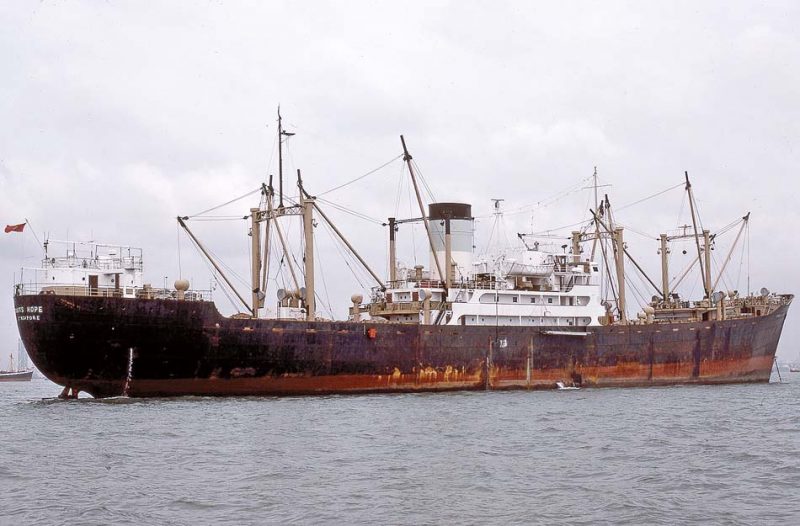
Harold Norman Smyth became Chairman of the Straits Steamship Co. Ltd. and of Mansfield and Company in 1962 for three years, having succeeded Sir Ewen Fergusson. He had joined Mansfields in 1936 and served in the Straits Settlements R.N.V.R. between 1939 and 1942. He was also a director of the subsidiary Malaysian Airways Ltd. and a Member of the Port of Singapore (PSA). The fleet in 1962 was 41 ships, with a purchased passenger/cargo ship having joined in 1956 as Kinabalu, having been launched by the Ardrossan Dockyard Ltd. on 6th March 1950 as El Kerym for the Halal Shipping Co. Ltd. Two sister passenger and cargo ships were purchased in 1960 from KPM and renamed Kunak and Keningau, with passenger accommodation in the ‘midships superstructure. Kunau had been launched on 11th December 1948 as Baud at the Schiedam yard of Wilton Fijenoord N.V. and completed in April 1949, followed by her sister Reyniersz from the Van der Giessen yard at Krimpen in 1949. Reyniersz was named after the eleventh Governor of the Dutch East Indies, Carl Reyniersz (1604-1653). Smaller cargo ships and barges continued to be built for trading up the muddy creeks and inlets of the Malayan peninsula including Jitra 222/1956, Laju 178/1960, Mawai 100/1955, Membau 746/1959, and the sisters Tapah 402/1956 and Tronoh 402/1958.
Straits Steamship Company Ltd. Finale
The company took over marine engineers Watt and Akkermans in May 1972, which had been founded in 1939 by George Watt and Frank Akkermans and was incorporated in 1959. The company managers of Mansfield and Company were taken over in November 1973, and other developments were a 67.5% holding taken in Eastern Fleets Ltd., and the management of the small coastal tankers of the Kris Shipping Company of Kuala Lumpur. Thus the fleet in 1973 was a lot different from earlier times and much smaller, and consisted of nine passenger and cargo ships under Straits Steamship Co. Ltd., six small cargo ships under Eastern Fleets Ltd., and six managed coastal tankers. The much loved white hulled Blue Funnel Line passenger ship Centaur of 8,262 grt completed in January 1964 at the Clydebank yard of John Brown & Co. Ltd. was registered under Eastern Fleets Ltd. for three years from 1975 to 1978.
The Chairman of Straits Steamship Co. Ltd. in 1973 was R.E.L. Wingate, with G.H. Postlethwaite as Managing Director and five other Chinese and British directors. The fleet continued to dwindle in size, with Kunak sold to the Pacific International Lines (P.I.L.) of Singapore in 1977 and renamed Kota Sari and was then broken up at Gadani Beach in May 1978, with her sister Keningau also broken up in 1978, this time at Hong Kong. Kimanis continued operating thirteen day voyages to Tawau, Sandakan and Kota Kinabalu at fares costing $380 towards the end of her company career in 1982, when she was sold and renamed An Li and broken up a few years later. Rajah Brooke was operating eight day voyages to Sarawak and Brunei at fares of $270 for a single cabin sharing bathroom facilities until her demolition began on 30th August 1980 at Singapore. A new Rajah Brooke cargo ship of 4,400 dwt was purchased later in 1980 and had been built in Spain in 1971 as the German owned Amasis. She was sold off in 1994 and broken up in Mumbai in April 1999.
A diversification into general cargo shipping was begun with two five hold Swire of Hong Kong cargo ships of 5,500 dwt, which were purchased in 1978 and renamed Straits Hope (ex Chefoo) and Straits Star (ex Kwangsi), and had been built by the Taifoo Dockyard during 1958/60. The feeder container ship Straits Enterprise of 5,199 grt and 310 TEU capacity was completed in June 1977 at Imbari for the company and was owned for five years, and the ro-ro Anro Asia of 13,402 grt was on charter in 1978 for trading between Japan, South East Asia and Australia. Two further engines aft cargo ships, Straits Pride and Straits Venture of between 4,000 and 4,400 dwt, were also traded during the 1980s decade.
The Straits Steamship Co. Ltd. also diversified into non shipping ventures such as property, warehousing and distribution during the 1970s and 1980s decades. In July 1983, Keppel Corporation of Singapore purchased a 58% stake in the company, increased to 82% two months later, purchasing the shares of the Ocean Transport & Trading (Blue Funnel). In 1989, when property became the main business of the company it was renamed as Straits Steamship Land (SSL), withdrawing from the shipping business and focussing on property instead. The very small shipowning part of SSL was then split off and renamed Steamers Maritime Holdings Ltd., a listed company on the Singapore Stock Exchange. This company disappeared in 1997 in a Keppel Corporation reorganisation, which has a worldwide market capitalisation of $13.8 billion and is one of the largest offshore oil rig builders in the world.
Postscript
The Straits Steamship Company Ltd. celebrated a century of existence in 1990, albeit during the last year as Straits Steamship Land (SSL). The company occupied three of the four Ocean Buildings on Collyer Quay in Singapore during this century, their first being a gorgeous curved stone building begun in 1919 and completed in 1923 to the design of British architect Somers H. Ellis. It featured overhanging balconies on the second and fifth levels and verandahs on the third and fourth levels, and replaced an earlier building on the same site dating from 1864. This gorgeous building was demolished in 1970, and the third Ocean Building on this site was a tall 28 storey office block on the same site completed in 1974 and which housed many shipping companies. There was a great view of the shipping anchorage as this was before the major Marina Bay development. The present Ocean Financial Centre of unbelievable skyscraper proportions was built by Keppel Land and is on the same site on the edge of Marina Bay tourist attractions with Merlion Park at the tip of Collyer Quay. The information on World War II in this article came from the excellent book ‘Home Port Singapore’ by Professor Kenneth Gordon Tregonning (1923-2015), formerly Raffles Professor of History at the University of Singapore, and to whom I wish to express my thanks.

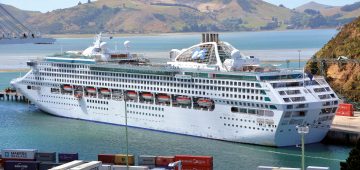



Comments
Sorry, comments are closed for this item